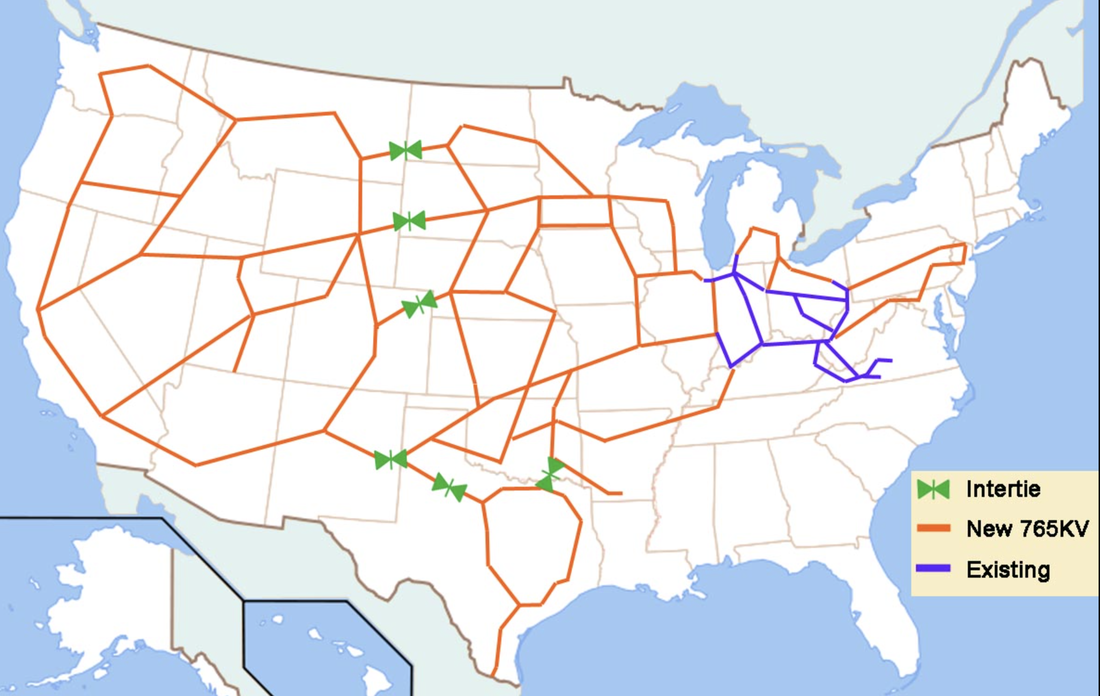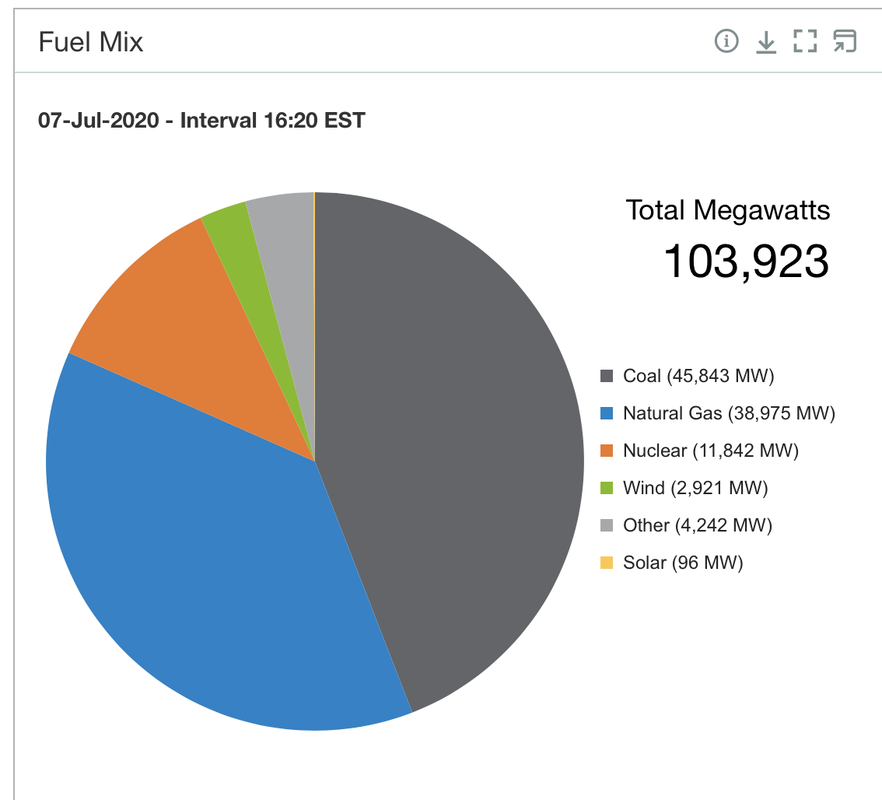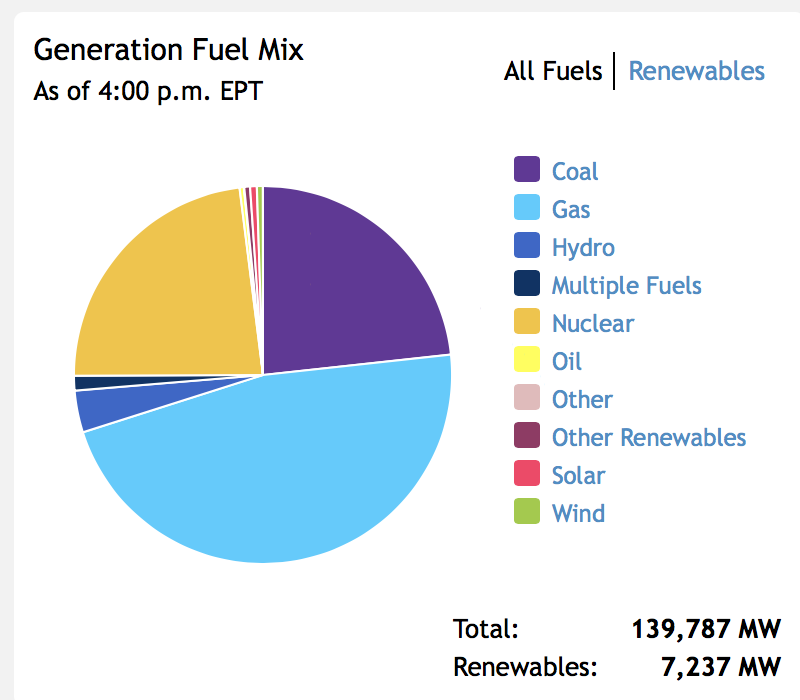Renewable energy has been using your tax dollars for years to build infrastructure that provides small amounts of intermittent energy. Because they are financially rewarded with your money for building, they've built more than the people can use in certain areas, like the Midwest. They have gobbled up a lot of the available transmission capacity to export their product to cities, where people expect all the benefits of energy without any of the sacrifice that goes along with creating it. In order to keep building renewable energy generators in places where there is no need for the electricity, these piggish profiteers want to build a whole bunch of new transmission. They presume if they can get their energy to populated areas, consumers will be forced to buy it. Absolutely not true. The populated areas are also busy building their own renewable infrastructure so they can create both renewable energy and economic development in their own cities, states, and regions. We don't need new transmission to switch to renewable energy. Even if we overbuild transmission, it doesn't mean distribution utilities in New Jersey will choose to buy wind energy generated in Iowa.
Let's take a look at the one-sided propaganda these racketeers are spreading.
1. A macrogrid can save consumers billions of dollars per year.
THE TRUTH: The "studies" that supposedly proved all these savings are skewed. The biggest problem? All renewables studied were terrestrial sources. Offshore wind wasn't part of the study, although offshore wind provides the best source of wind power and is conveniently located near the largest population centers -- both coasts and the Great Lakes. When offshore wind is removed from the equation, the best sources of wind become the Midwest, and the best sources of solar are the south and southwest. But is it cost effective to build a gigantic new grid to move this generation to the population centers? No, they already have a better source closer at hand. I also don't trust the magic math taking place here that prices this new grid. It's going to take a lot longer, and cost a lot more, than a bunch of scientists think it will. None of these guys know the first thing about utility ratemaking. And what are these scientists comparing their new utopia to in order to produce a "savings"? The most expensive sources of energy they can find shipped the longest distance they can imagine on the most congested transmission lines they can find? That's how magic math happens... change the variables until you arrive at the desired answer. If we don't build a macrogrid and force people to use energy produced thousands of miles away, how much will energy prices actually rise? But it's not really about the price of energy, it's about "climate change" and changing how we produce energy. Telling the people that it's going to save them money on their power bill is a dirty lie.
2. We can power our country with 100% renewable energy.
THE TRUTH: Not feasible with today's technology. Just the other day, the Midwest ISO ran into an issue with not having enough supply on a hot day. This is a region that has built a lot of wind turbines. But those turbines weren't producing when the region needed it most on a hot day. Here's a graph showing the generation sources for MISO's power on a hot, summer afternoon.
MISO was also importing more than 5,700MW of power from neighboring PJM Interconnection, the grid authority for a number of eastern states. MISO was importing an astonishing 39% more power than scheduled from PJM in order to serve its load. Here's a graph of the generation sources operating in PJM at that time.
These graphs show the cheapest resources available being dispatched in real time. If renewables were cheap and available, MISO and PJM would have been using them. The resources necessary to run everything on clean "renewable" energy do not exist.
However, some "studies" and "reports" have suggested a massive build out of new industrial wind and solar under the pretense that we can have enough renewables to meet load. How much wind and solar does it look like we're going to need to meet peak load on a hot day? This report calls for 62,626 square miles of new wind and solar installations. For comparison, that's an area just a little bigger than the state of Georgia, and just a bit smaller than the state of Wisconsin. Imagine the entire state of Georgia covered end to end, side to side, with industrial wind turbines and solar panels. How much do you think that would cost? And if the government keeps giving them tax credit handouts with our tax dollars, how much additional cost would that add?
The capacity factors for renewable energy are surprisingly low because they cannot store fuel on site to run when called. When they produce energy, it's a happy accident, not on purpose. Because renewable generators can only be counted on to produce energy a very small percentage of the time, you'd need to overbuild them by perhaps factor of 10. Example: If you need a generator with a dependable capacity of 100MW, you'd need 10 wind farms with a nameplate capacity of 100 MW each. Even then, you're taking your chances that those resources would produce the power you need when you need it.
Wind and solar are poor choices for a 100% carbon-free power source.
3. Renewable energy provides jobs and we need jobs to restore our economy after Coronavirus.
THE TRUTH: Are we supposed to spend money building stuff we don't need in order to create jobs? That's absurd. We build stuff we need, and jobs happen. Why would we spend a bunch of money creating make work jobs building stuff we don't need? The renewable energy industry isn't at any greater risk than any other industry in the wake of Coronavirus. In fact, they seem to be getting additional help other industries aren't. Because Coronavirus put a short pause on the renewable energy industry, the federal government has extended the amount of time they have to claim the fading production tax credit. What other industries are getting taxpayer handouts for making things? Are restaurants getting tax credits for each meal they sell? Of course not. Renewable energy, however, is getting a tax handout for each unit of power they generate for 10 years after being put in service. Remember, that money they're earning comes directly from your pocket because the government does not have its own source of income. All its income comes from you!
We've been subsidizing industrial wind and solar for decades. At first, perhaps it needed a leg up to compete with conventional generation, but over time it developed an appetite for government handouts and now doesn't want to exist without them. In fact, the renewable energy industry has asked the federal government to convert the tax credits it currently earns into straight up cash payments. A tax credit is just that... a credit for the recipient's tax burden. Because many renewable energy companies pay little taxes, they have been converting the credits they earn into cash by selling them to other corporations that can use them to reduce their tax liability. But just like those companies that will convert your long-term legal settlement payments into instant cash, they only give you a portion of the value of the settlement (or tax credit) in exchange for some cash now. Renewable energy companies don't want to lose the full value of tax credits they earn but can't use, so they want the government instead to just give them cash they can use. Pretty bold, isn't it?
And then the industry speaks out of the other side of its mouth about how mature its industry is, how cheap the power they generate is, and how mainstream it's become. They claim they are competitive with conventional generation. If that is true, why do they still need a handout to stay in business?
Renewable energy companies have opportunely seized upon the Coronavirus crisis to pretend they can solve the economic crisis. Never let a good crisis go to waste!
Renewable energy is back in business, and they're building things. We don't need to give them more money to create new jobs... we need to concentrate on other industries that haven't fully re-opened in order to restore jobs. We don't need to spend our money building out an existing industry.
4. We need to "modernize" our grid.
THE TRUTH: Our grid is adequate for its purpose. Old lines and equipment are constantly re-built and upgraded. Transmission operators and reliability organizations make sure the grid stays reliable. They order fixes, re-builds, and new lines as needed. Interestingly enough, this call to build a new "macrogrid" doesn't even contemplate fixing the existing lines, it just wants to build a new system to work in conjunction with the existing one. If the existing one fails, it's going to take the new "macrogrid" down with it. The macrogrid is about building new transmission to ship energy further from its point of generation. It's got nothing to do with the existing grid.
And a couple more things about that crazy LA Times article...
It starts out talking about a newly built power line in operation. It mentions that there was opposition to the project because it would "saddle energy consumers with unnecessary costs, degrade sensitive wildlife habitat and interrupt a series of gorgeous landscapes." And then the Times points out that it was built anyhow. Logic leap! Just because the project was built doesn't mean it obviated all those concerns. It merely means that those concerns were run over in the process of approving it. Unnecessary costs and degradation of habitat and landscapes happened anyway. Building it didn't make them disappear.
The article tells you that building billions of dollars of new transmission will make you less likely to catch Corona. So will wearing a mask, and that's only going to cost you a buck.
Landowner concerns about eminent domain and sacrifice for the benefit of people far, far away are glossed over and minimized with the idea that if they don't accept it, we're all doomed. The idea that we have to sacrifice something and may only choose which sacrifice to make is overblown. We can have it all if we choose to build renewables near load. It's as simple as that!
On the subject of Clean Line Energy Partners... that company failed because it had no customers. It wasn't the fault of landowners or regulation. Those things merely slowed the projects, they didn't kill them. CLEP failed because there were no places "where the energy is needed." If nobody needs imported "clean" power, why would we spend billions building new transmission?
The article points out that California, a huge importer of power, has plans for 100% clean electricity by 2045. But what happened when California recently debated the issue of installing wind offshore? The fishing industry, the U.S. Navy, and coastal residents got their shorts in a wad, claiming that offshore wind would hurt them. Where does California plan to get its renewable energy if it doesn't make it in state? Why, it plans to put those hurtful burdens on other states to produce it and export it to California. The politically disconnected are ground zero. This is the epitome of environmental injustice! If you want renewable energy, you must sacrifice. You! Not someone else! Only when these states are forced to make their own sacrifices will all the impossible clean energy goals begin to wane.
One more thing... this "macrogrid" has been proposed in one form or another ever since I've been doing the transmission thing... a dozen years now. Except it's only recently been about "clean energy." It used to be about moving coal-fired resources around the country "cheaply." It's just been re-packaged to fit today's narrative. It's not about "clean energy." It's about building a whole bunch of transmission in order to make billions of dollars of profit at consumer expense.
And about the House Democrat's newly released climate plan? Ahh... that's another blog post soon to come! Keep checking back!



 RSS Feed
RSS Feed